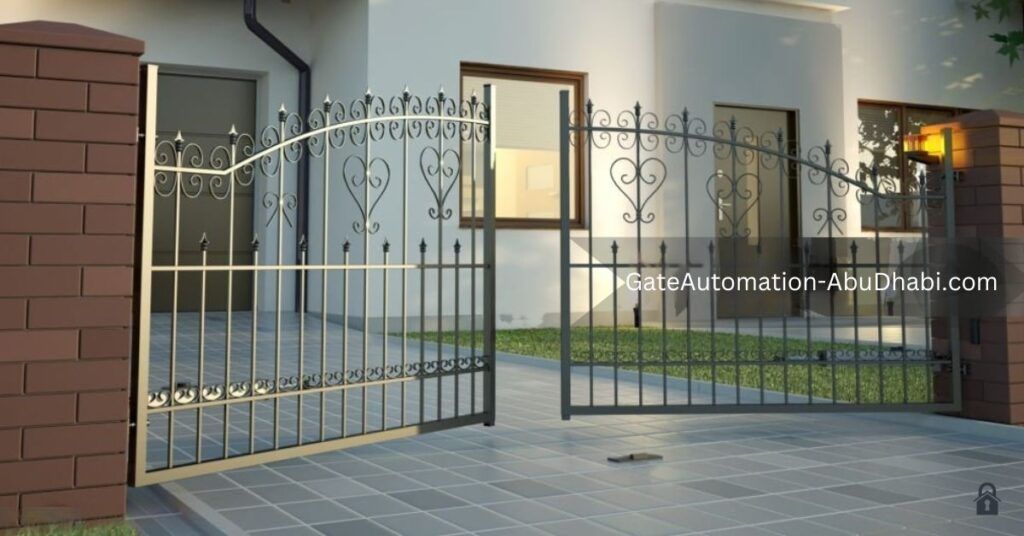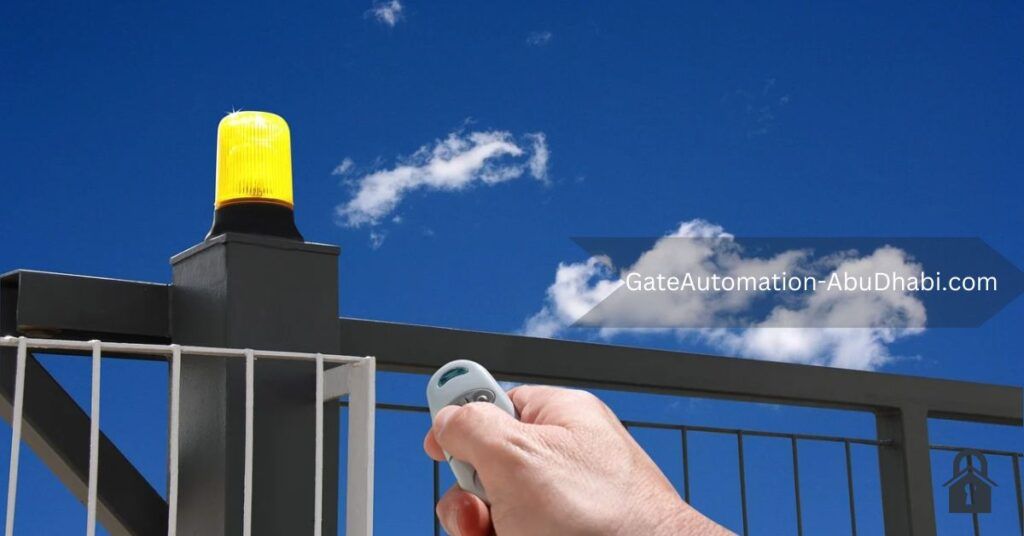Introduction
In today’s world, ensuring the security and convenience of your property is paramount. Whether it’s a residential home, a commercial building, or a gated community, the need for effective access control solutions is evident. This is where automatic gates and systems come into play. They offer a blend of security, convenience, and aesthetic appeal that traditional gates simply can’t match. Imagine arriving home after a long day’s work and being able to effortlessly enter your property with just the click of a button or the wave of a key. This level of convenience not only adds value to your property but also enhances your overall lifestyle. Let’s explore in this article about the benefits of automation of gates.
Components of Automatic Gates and Systems
The gates are made up of several parts, each playing a crucial role in making the gate do its job. Let’s break it down:
The gate itself: This is the actual barrier that opens and closes. It can be made of metal, wood, or other materials.
Gate opener: Think of this as the engine of the gate. It’s what makes the gate move.
Control system: It tells the gate when to open and close. It can be operated with a keypad, Remote Control, or even your smartphone.
Safety features: They have built-in safety measures to prevent accidents. These can include sensors that detect objects in the gate’s path or systems.

Types of Automatic Gates
It comes in different styles to suit various needs. Here’s a quick rundown:
- Swing Gates: These gates swing open like a door. They’re great for properties with ample space and a traditional aesthetic.
- Sliding Gates: Sliding gates slide horizontally along a track. They’re ideal for properties with limited space or steep driveways.
- Barrier Gates: Barrier gates are typically seen in parking lots or commercial properties. They lift or lower to allow or restrict access.
- Overhead Gates: These gates lift vertically, like garage doors. They’re commonly used in commercial settings or areas with limited space.
Access Control Mechanisms
Let’s explore some common access control methods used for this.
- Keypad Entry: These systems require users to input a code to open the gate. This code can be shared with trusted individuals, such as family members or employees, allowing them to access the property.
- Remote Controls: It is the most familiar access control mechanism for gates. They allow users to open and close the gate with the push of a button from the comfort of their vehicle.
- Intercom Systems: Visitors can use the intercom to request entry, and property owners can grant access by remotely opening the gate. It adds an extra layer of security by allowing verification of visitors before granting entry.
- Biometric Authentication: By utilizing unique biological traits, such as fingerprints or facial features, to grant access, it offers unparalleled security, as biometric data is nearly impossible to replicate.

Power Sources and Automation
The gates rely on different power sources and automation technologies for smooth operation:
- Electric Motors: Electric motors power gates, connecting to the property’s electricity for consistent operation.
- Hydraulic Systems: Hydraulic systems are used for heavy or large gates, providing robust power for smooth movement.
- Solar-Powered Options: Solar panels convert sunlight into energy, offering an eco-friendly power source for gates.
Gate Opening and Closing Mechanisms
- Swing Gate Operators: These devices control the swing motion of gates, ensuring smooth opening and closing.
- Sliding Gate Motors: Sliding gate motors drive gates along tracks, enabling precise and reliable movement.
Safety Features
Safety Features: The gates incorporate several safety features to mitigate potential hazards:
- Obstruction Sensors: These sensors detect objects in the path of the gate, halting its movement to prevent collisions.
- Photoelectric Sensors: Photoelectric sensors emit a beam of light, triggering the gate to stop if the beam is interrupted, preventing crush accidents.
- Edge Sensors: Edge sensors detect pressure or touch along the gate’s edges, immediately stopping its movement to prevent injury.
- Manual Release Mechanism: In case of power failure or emergencies, they are equipped with manual release mechanisms to manually operate the gate.
Integration with Smart Home Technology
They can seamlessly integrate with smart home systems, offering enhanced convenience, security, and control.
- Remote Access: Smart home integration allows property owners to control their gates remotely using smartphone apps or web interfaces. This means you can open or close your gate from anywhere with an internet connection, providing convenience and flexibility.
- Scheduling: Smart home systems enable the scheduling of gate operations based on predefined times or events. For example, you can set your gate to open automatically during certain hours or when specific conditions are met, such as when your vehicle approaches.
- Voice Control: Integration with voice assistants like Amazon Alexa or Google Assistant allows for hands-free operation of gates. Simply issue voice commands to open or close the gate, adding an extra layer of convenience.
- Activity Alerts: Smart home integration can provide real-time activity alerts, notifying you when the gate is opened or closed. This allows for proactive monitoring of property access and enhances security by alerting you to any unexpected activity.
Property Value Increase
Investing in an automatic gate system not only enhances security and convenience but also boosts the value of your property. Studies have indicated that gated properties command higher prices in the real estate market. Potential buyers are willing to pay a premium for the added security and exclusivity that automatic gates provide. Homeowners who have installed these gates report a significant increase in property value, making it a wise long-term investment.
Sustainability and Green Technology
With a growing emphasis on sustainability, they will adopt eco-friendly technologies such as solar power and energy-efficient components. This shift towards green technology will reduce environmental impact and operating costs.
Enhanced User Experience
The future of these gates will prioritize user experience, offering intuitive interfaces, personalized settings, and adaptive functionality. Features like predictive maintenance alerts and user behavior analytics will enhance convenience and satisfaction.
Cost Analysis
While the initial investment in such a gates system may seem significant, it’s essential to consider the long-term benefits and cost savings. By reducing the risk of burglary and vandalism, homeowners can potentially save thousands of dollars in property damage and insurance premiums over time. Additionally, the added convenience and value increase contribute to the overall return on investment, making these a financially savvy choice for homeowners.
Conclusion
In conclusion, These gates play a crucial role in modern property management, offering enhanced security, convenience, and aesthetics. By understanding how gates work and staying informed about the latest trends and innovations, property owners can make informed decisions to protect and enhance their properties.
Don’t wait any longer to experience the countless advantages of these gates. Take the first step towards enhancing your property today and explore our range of automatic gate systems. Your security and convenience are our top priority.
FAQ
How does AutoGate work?
They use electric motors to open and close. Remote controls or sensors send signals to a control board, which instructs the motor to move. Safety sensors prevent the gate from closing on objects.
How do automatic gate sensors work?
Infrared beams (photocells) or ground pressure mats trigger automatic gate opening or stopping for safety
Which sensor is used in automatic gates?
They use a variety of sensors, but the most common are optical sensors. These use infrared beams to detect motion and trigger the gate to open. Other options include pressure sensors embedded in the driveway, radar sensors for long-range detection, and even magnetic sensors for metal objects.
How do gates detect cars?
Automatic gates use sensors like underground loops to sense metal mass, light beams to detect breaks, or microwave/ultrasonic to pick up motion.


